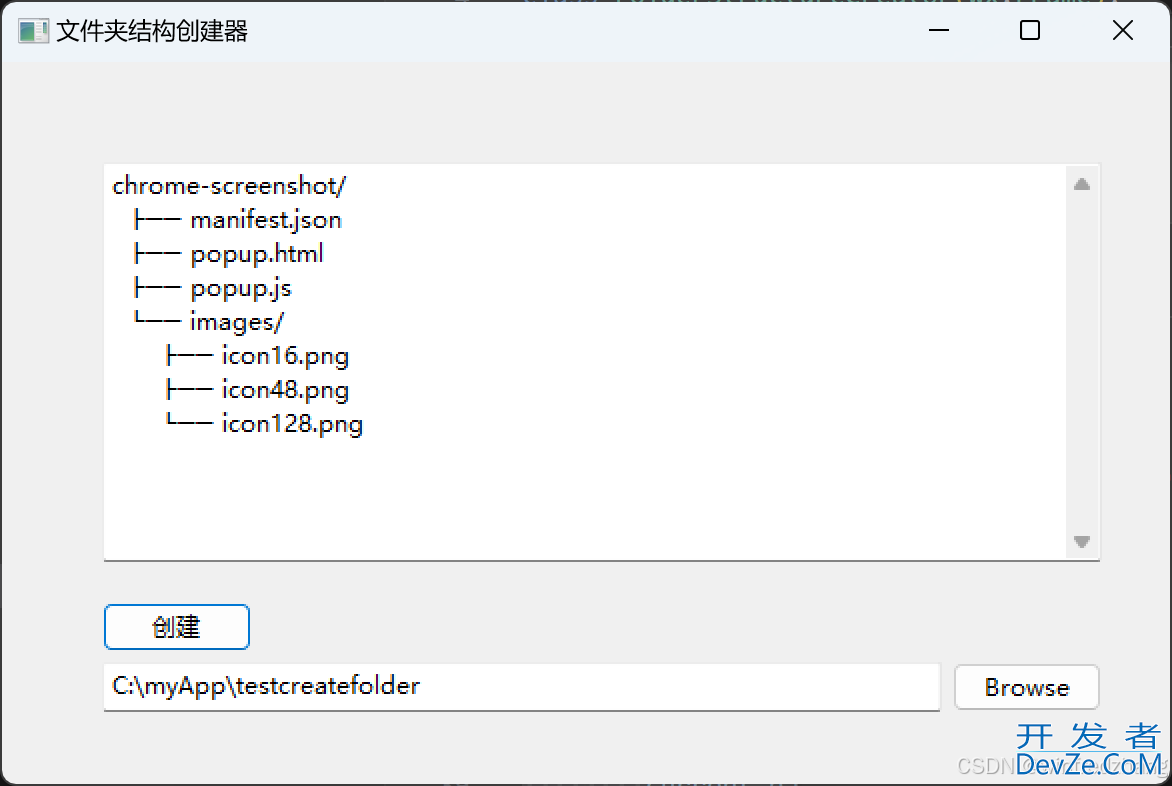目录
- 安装
- 创建请求
- 自定义头部
- 超时时间
- SSL证书
- 认证
- 请求类型
- Query Params
- Form表单
- 文件上传
- jsON
- 二进制数据
- 响应
- 响应类型
- Cookie
- 重定向历史
- httpx.Client
- 合并/共享配置
- base_url
- limits
- 调用python Web App
- 事件钩子
- 代理
- 异步支持
HTTPX是Python3的功能齐全的HTTP客户端,它提供同步和异步API,并支持HTTP/1.1和HTTP/2
安装
pip install httpx
创建请求
通过httpx库发出一个请求非常简单,如下:
import httpx
response = httpx.get('https://www.baidu.com/')
print(type(response), response) # <class 'httpx.Response'> <Response [200 OK]>
同样,我们再来发出一个POST请求:
response = httpx.post('http://localhost:5000/login', data={'username': 'httpx', 'password': '123456'})
PUT, DELETE, HEAD和OPTIONS请求都遵循相同的样式:
response = httpx.put('http://www.baidu.com/', data={key: value})
response = httpx.head('http://www.baidu.com/')
response = httpx.delete('http://www.baidu.com/')
response = httpx.options('http://www.baidu.com/')
自定义头部
要在传入请求中包含其他标头,请使用headers关键字参数:
header = {"user-agent": 'my_test/0001'}
response = httpx.get("https://api.github.com/events", headers=header)
超时时间
httpx设置默认的超时时间为5秒,超过此时间未响应将引发错误。我们可以通过timeout关键字参数来手动修改它:
response = httpx.get('http://localhost:5000/update', timeout=10)
你也可以将其设置为None完全禁用超时行为
response = httpx.get('http://localhost:5000/update', timeout=None)
超时又可以分为connect, read,write和pool超时。如果想详细设置,我们可以通过httpx.Timeout类来实现:
# 读取超时为10s,其他超时为5秒
timeout = httpx.Timeout(5, read=10)
response = httpx.get('http://localhost:5000/update', timeout=timeout)
SSL证书
通过httpx发出HTTPS请求时,需要验证所请求主机的身份。我们可以通过verify来指定我们存在的CA证书:
response = httpx.get('https://example.org', verify='../../client.pem')
或者你可以传递标准库ssl.SSLContext
import ssl
import httpx
context = ssl.create编程客栈_default_context()
context.load_verify_locations(cafile='../../client.pem')
response = httpx.get('https://example.org', verify='../../client.pem')
又或者,你可以将verify设置为False禁用SSL验证:
response = httpx.get('https://example.org', verify=False)
认证
HTTPX支持Basic Auth和Digest Auth身份验证。要提供身份验证凭据,请将2个元组得纯文本str或bytes对象作为auth参数传递给请求函数:
response = httpx.get('https://example.com', auth=('my_user', 'password123'))
要提供Digest Auth身份验证得凭据,你需要Digest Auth使用纯文本用户名和密码作为参数实例化一个对象。然后可以将该对象作为auth参数传递给上述请求方法:
from httpx import DigestAuth
auth = DigestAuth('my_user', 'password123')
response = httpx.get('https://example.com', auth=auth)
httpx还提供了一个FunctionAuth类,允许我们传入一个Callable对象,该Callable接收request参数,并返回request。如下:
import httpx
from httpx._auth import FunctionAuth
def init_authorization(request):
request.headers['Authorization'] = 'Bearer 12334'
yield request
auth = FunctionAuth(init_authorization)
response = httpx.get('http://localhost:5000/home', auth=auth)
请求类型
Query Params
params = {"name":"zhangsan", "age":18}
response = httpx.get("https://www.baidu.com/s", params=params)
此时我们打印一下URL,发现该URL已经被正确编码:
print(response.url) # https://www.baidu.com/s?name=zhangsan&age=18
也可以传递一个列表数据进去:
params = {"name":"zhangsan", "favorite": ["football", "basketball"]}
response = httpx.get("https://www.baidu.com/s", params=params)
Form表单
通常情况下,你想要发送一些表单编码数据,就像HTML表单一样。要做到这一点,你只需要将字典传递给data关键字参数即可:
data = {'name': '张三'}
response = httpx.post('http://127.0.0.1:5000/test/post', data=data)
文件上传
你还可以使用HTTP分段编码上传文件
f = open('a.txt', 'rb')
files = {'file': f}
response = httpx.post('http://localhost:5000/post', files=files)
f.close()
JSON
如果你想要发送一个JSON数据,你可以通过将数据传递给json关键字参数即可:
response = httpx.post('http://127.0.0.1:5000/test/post', json={'name': '张三'})
二进制数据
对于其他编码,应使用content关键字参数,传递一个bytes类型数据
content = b'Hello World'
response = httpx.post('http://127.0.0.1:5000/test/post', content=content)
响应
响应类型
在上面的栗子可以知道,我们每次请求之后都会返回一个httpx.Response对象,我们可以从此对象中获取响应内容:
response = httpx.get("https://api.github.com/events")
print(type(response.text), response.text) # <class 'str'> [{"id":"14551634865","type":"PushEvent", ...}]
二进制响应
print(type(response.content), response.content) # <class 'bytes'> b'[{"id":"14551634865","type":"PushEvent", ...}]
JSON响应
print(type(response.json()), response.json()) # <class 'list'> [{'id': '14551634865', 'type': 'PushEvent', ...}]
流式响应
对于大型下载,你可能需要使用不将整个响应主体立即加载到内存中的流式响应。你可以流式传输响应的二进制内容:
for data in response.iter_bytes():
print(data)
流式传输响应的文本内容:
for text in response.iter_text():
print(text)
逐行流文本:
for line in response.iter_lines():
print(line)
原始字节:
for chunk in response.iter_raw():
print(chunk)
Cookie
如果响应包含了Cookie,你可以这样快速的访问它:
response = httpx.get('http://localhost:5050/get')
print(response.cookies['user'])
重定向历史
history响应的属性可用于检查任何后续的重定向。它包含遵循它们的顺序的所有重定向响应列表。例如GitHub将所有HTTP请求重定向到HTTPS:
response = httpx.get('http://github.com/')
print(response, response.url) # <Response [200 OK]> https://github.com/
print(response.history, response.history[0].url) # [<Response [301 Moved Permanently]>] http://github.com/
你还可以使用allow_redirects关键字参数来修改默认得重定向处理:
response = httpx.get('http://github.com/', allow_redirects=False)
print(response) # <Response [301 Moved Permanently]>
print(response.history) # []
httpx.Client
如果你会使用requests,那么可以使用httpx.Client代替requests.Session
with httpx.Client() as client:
response = client.get('http://localhost:5000/details')
另外,还可以使用.close()方法明确关闭连接池,而不会阻塞:
client = httpx.Client()
try:
response = client.get('http://localhost:5000/details')
finally:
client.close()
一旦你拥有了一个httpx.Client实例,那么你就可以通过调用.get()、.post()等方法发送请求。这些方法同样支持timeout、auth、headers等参数来满足我们的需求
合并/共享配置
httpx.Client还接收headers、cookie和params参数,对于同一组的请求操作,将共享同样的headers、cookie和params参数。如果请求方法中也包含了这些参数,那么它们将进行合并:
with httpx.Client(headers={'Token': '12345678'}, params={'page_size': 1, 'size': 20}) as client:
resp1 = client.get('http://localhost:5000/get', params={'search': 'laozhang'})
resp2 = client.post('http://localhost:5000/post')
如此,这两个请求的头部都将包含{'Token': '12345678'}。请求1的params将会合并,请求2将会使用{'page_size': 1, 'size': 20}查询参数
对于其他参数,如auth等,那么将会优先使用请求方法里面的auth
base_url
httpx.Client还允许使用base_url参数来设置基础URL,如下:
with httpx.Client(base_url='http://localhost:5000') as client:
response = client.get('/user/detail')
print(response.url) # http://localhost:5050/user/detail
limits
可以使用limits关键字参数来控制连接池的大小。它需要传递一个httpx.Limits类实例,httpx.Limits类接收以下两个参数:
- max_keepalive: 最大活跃连接数,设置为None表示无限制。默认为10
- max_connections:最大连接数,设置为None表示苏限制。默认为100
limits = httpx.Limits(max_keepalive=2, max_connections=5) client = httpx.Client(limits=limits)
调用Python Web App
你可以配置httpx客户端以使用WSGI协议直接调用Python Web应用程序。这对于两个主要用例特别有用:
- 使用httpx的测试案例中的客户端
- 在测试期间或在dev/staging环境中模拟外部服务
import httpx
from flask import Flask
app = Flask(__name__)
@app.route("/home")
def home():
return 'Home Api Success'
with httpx.Client(app=app, base_url='http://testapi') as client:
response = client.get('/home')
print(response) 编程客栈 # <Response [200 OK]>
print(response.text, response.url) # Home Api Success http://testapi/home
我们还可以通过使用WSGITransport来使用给定的客户端地址用于请求,如下:
transport = httpx.WSGITransport(app=app, remote_addr='1.2.3.4')
with httpx.Client(transport=transport, base_url='http://testapi') as client:
response = client.get('/home')
print(response) # <Response [200 OK]>
print(response.text, response.url) # Home Api Success http://testapi/home
如此,视图函数home中request.remote_addrZcQSZdXN将会是1.2.3.4
事件钩子
httpx允许你向客户端注册事件钩子,每次发生特定类型的事件时都会调用该钩子。httpx支持两个事件钩子:
- request: 在即将发生请求时调用。为一个Callable列表,Callable接收httpx.Request实例参数
- response: 响应返回后调用。为一个Callable列表,Callable接收httpx.Response实例参数
def _log_request(request):
print(type(request), request.url, request.method) # <class 'httpx.Request'> http://localhost:5000/hello GET
def _log_response(response):
print(type(response), response.url, response.text) # <class 'httpx.Response'> http://localhost:5000/hello Home Api Success
with httpx.Client(base_url='http://localhost:5000') as client:
client.get('/home')
代理
要将所有请求使用http://localhost:8030的代理,请将代理URL传递给Client:
with httpx.Client(proxies='http://localhost:8030') as client:
pass
对于更高级的使用,请使用dict。例如,要将HTTP和HTTPS请求路由到两个不同的代理: http://localhost:8030和http:localhost:8031:
proxies = {
'http://': 'http://localhost:8030',
'https://': 'http:localhost:8031'
}
with httpx.Client(proxies=proxies) as client:
pass
代理所有请求:
proxies = {
'all://': 'http://localhost:8030'
}
代理域名为“example.com”的所有请求:
proxies = {
'all://example.com': 'http://localhost:8030'
}
代理域名为“example.com”的所有HTTP请求:
proxies = {
'htt编程客栈p://example.com': 'http://localhost:8030'
}
代理所有包含“example.com”的所有请求:
proxies = {
'all://*example.com': 'http://localhost:8030'
}
对于上面匹配,如果未匹配到将不使用代理。域名后面还可以添加端口号,用于更加严格的匹配。此外,我们还可以将匹配设置为None,用于排除,如下:
proxies = {
'all://': 'http://localhost:8030',
'all://example.com': None
}
即除使用“example.com”域名的路由,将使用“http://localhost:8030”代理
异步支持
HTTPX默认情况下提供标准的同步API,但是如果需要,还可以为你提供异步客户端的选项。要发出异步请求,你需要一个httpx.AsyncClient
import asyncio
import httpx
async def main():
async with httpx.AsyncClient() as client:
response = await client.get('https://example.org/')
loop = asyncio.get_event_loop()
try:
loop.run_until_complete(main())
finally:
loop.close()
发出请求
请求方法都是异步的,因此你应该使用response = await client.get(...)样式对以下所有内容使用:
- AsyncClient.get(urwww.cppcns.coml, ...)
- AsyncClient.options(url, ...)
- AsyncClient.head(url, ...)
- AsyncClient.post(url, ...)
- AsyncClient.put(url, ...)
- AsyncClient.patch(url, ...)
- AsyncClient.delete(url, ...)
- AsyncClient.request(url, ...)
- AsyncClient.send(url, ...)
流式响应
- Response.aread()
- Response.aiter_bytes()
- Response.aiter_text()
- Response.aiter_lines()
- Response.aiter_raw()
更多关于httpx的操作请看: https://www.python-httpx.org/
到此这篇关于python-httpx的具体使用的文章就介绍到这了,更多相关python httpx内容请搜索我们以前的文章或继续浏览下面的相关文章希望大家以后多多支持我们!









 加载中,请稍侯......
加载中,请稍侯......
精彩评论